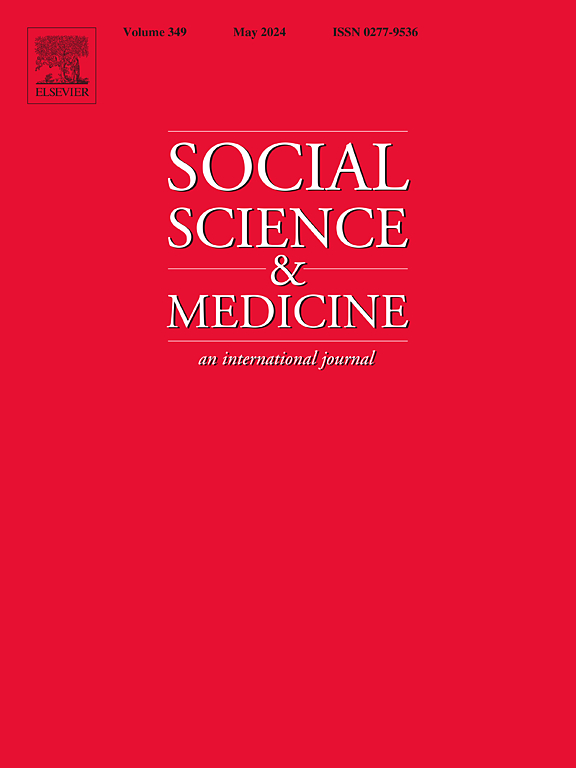The built environment and its association with type 2 diabetes mellitus incidence: A systematic review and meta-analysis of longitudinal studies
IF 4.9
2区 医学
Q1 PUBLIC, ENVIRONMENTAL & OCCUPATIONAL HEALTH
引用次数: 0
Abstract
This study aimed to systematically review longitudinal studies examining associations between the incidence of type 2 diabetes mellitus (T2DM) and built environmental factors. This review adhered to the 2020 PRISMA guidelines. Longitudinal studies examining associations between T2DM incidence and built environmental features were eligible. Built environment constructs corresponded to the following themes: 1) Walkability – factors such as sidewalks/footpaths, crosswalks, parks, and density of businesses and services; (2) Green/open space – size, greenness, and type of available public outdoor spaces; (3) Food environment – ratio of healthful food outlets (e.g., greengrocers, butchers, supermarkets, and health food shops) to unhealthful food outlets (e.g., fast-food outlets, sweet food retailers, and convenience stores). Five databases (e.g., Medline) were searched from inception until July 2023. Qualitative and quantitative synthesis were used to summarise key findings, including a meta-analysis of adjusted Hazard Ratios (aHR).
Of 3,343 articles, 16 longitudinal studies from seven countries, published between 2015 and 2023, involving 13,403,902 baseline participants (median of 83,898), were included. In four of the five studies, unhealthful food environment was significantly associated with higher incident T2DM. Five of seven greenspace studies and two of four walkability studies showed that greater greenery and greater walkability were statistically significantly associated with lesser incident T2DM. In pooled analyses, greater T2DM incidence was associated with unhealthful relative to healthful food environments (pooled HR: 1.21; 95% CI: 1.04, 1.42), and T2DM incidence was inversely associated with green/open space environments (pooled HR: 0.82; 95% CI: 0.74, 0.92). Greater walkability was associated with a slight 2% lesser incidence of T2DM (pooled HR: 0.98; 95% CI: 0.98, 0.99). This review underscores consistency in the nature of associations between built environment features related to T2DM. We observed statistically significant inverse or “protective” associations between T2DM and walkability and healthful food environments. These results support calls for policies and guidelines that promote healthful food environments and walkability.
建筑环境及其与 2 型糖尿病发病率的关系:纵向研究的系统回顾和荟萃分析。
本研究旨在系统地回顾有关 2 型糖尿病(T2DM)发病率与建筑环境因素之间关系的纵向研究。本综述遵循 2020 年 PRISMA 指南。研究T2DM发病率与建筑环境特征之间关系的纵向研究均符合条件。建筑环境构建与以下主题相对应:1)步行能力--人行道/人行道、人行横道、公园以及商业和服务业密度等因素;(2)绿色/开放空间--可用公共户外空间的大小、绿化程度和类型;(3)食品环境--有益健康的食品店(如杂货店、肉店、超市和健康食品店)与有害健康的食品店(如快餐店、甜食零售店和便利店)之比。从开始到 2023 年 7 月,共检索了五个数据库(如 Medline)。采用定性和定量综合方法对主要研究结果进行总结,包括对调整后危险比(aHR)进行荟萃分析。在 3,343 篇文章中,纳入了 2015 年至 2023 年间发表的来自 7 个国家的 16 项纵向研究,涉及 13,403,902 名基线参与者(中位数为 83,898 人)。在五项研究中的四项中,不健康的饮食环境与较高的 T2DM 发生率显著相关。七项绿地研究中的五项和四项步行能力研究中的两项表明,绿化程度越高和步行能力越强与 T2DM 发生率越低有显著的统计学相关性。在汇总分析中,相对于有益健康的食物环境,不健康的食物环境与更高的 T2DM 发病率相关(汇总 HR:1.21;95% CI:1.04,1.42),而 T2DM 发病率与绿色/开放空间环境成反比(汇总 HR:0.82;95% CI:0.74,0.92)。更适合步行与 T2DM 发病率略低 2% 相关(综合 HR:0.98;95% CI:0.98,0.99)。本综述强调了与 T2DM 相关的建筑环境特征之间的关联性质的一致性。我们观察到,T2DM 与步行能力和健康食品环境之间存在统计学意义上的明显反向或 "保护性 "关联。这些结果支持了对促进健康饮食环境和步行能力的政策和指导方针的呼吁。
本文章由计算机程序翻译,如有差异,请以英文原文为准。
求助全文
约1分钟内获得全文
求助全文
来源期刊

Social Science & Medicine
PUBLIC, ENVIRONMENTAL & OCCUPATIONAL HEALTH-
CiteScore
9.10
自引率
5.60%
发文量
762
审稿时长
38 days
期刊介绍:
Social Science & Medicine provides an international and interdisciplinary forum for the dissemination of social science research on health. We publish original research articles (both empirical and theoretical), reviews, position papers and commentaries on health issues, to inform current research, policy and practice in all areas of common interest to social scientists, health practitioners, and policy makers. The journal publishes material relevant to any aspect of health from a wide range of social science disciplines (anthropology, economics, epidemiology, geography, policy, psychology, and sociology), and material relevant to the social sciences from any of the professions concerned with physical and mental health, health care, clinical practice, and health policy and organization. We encourage material which is of general interest to an international readership.
 求助内容:
求助内容: 应助结果提醒方式:
应助结果提醒方式:


